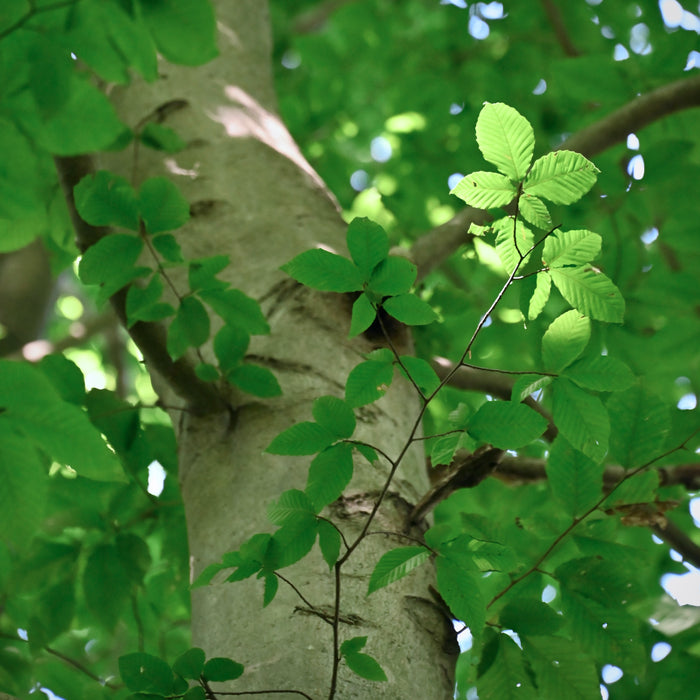
American Beech (Fagus grandifolia)
*Preorder only*
Estimated Height at Pickup: 2-3’, 3 gal
An important species for wildlife support with lovely, smooth silver bark. Best grown in rich mesic soils and can be difficult to grow in a landscape setting.
American beech are currently under pressure from beech bark disease, which is transmitted by non-native scale insects and occurs after a severe infestation on one tree. This disease is spreading into Indiana and can cause mortality.
Pollination: 2+ individuals needed.
Light: Full Sun, Part Sun/Shade
Soil Moisture: Wet Mesic, Mesic
Soil Type: Loam, Clay Loam
Height: 50’-100’
Width: 40’-80’
Bloom Color: Yellow, Green
Bloom Time: Apr-May
Fruit: Thin seed pods with curved prickles split to reveal nuts when mature.
Fall Color: Yellow, Brown
Root Type: Branching
Notable Wildlife Interactions: Hosts moths such as the luna and cecropia, beetles, leafhoppers, and other small insects. Nuts are high in protein and fat, and so valued by many animals such as jays, nuthatches, titmouse, woodpeckers, deer, squirrels, and chipmunks. Hollows and structure provide habitat for many woodland species. Occasionally browsed by deer.
Notes: Young plants tolerate shade. Nuts were highly favored by the now extinct passenger pigeon, and fed in large quantities to nestlings. Nuts are technically edible but not often harvested. Trees have both male and female flowers, but do not self pollinate well- two trees are needed to produce viable nuts.
Shipping Unavailable










